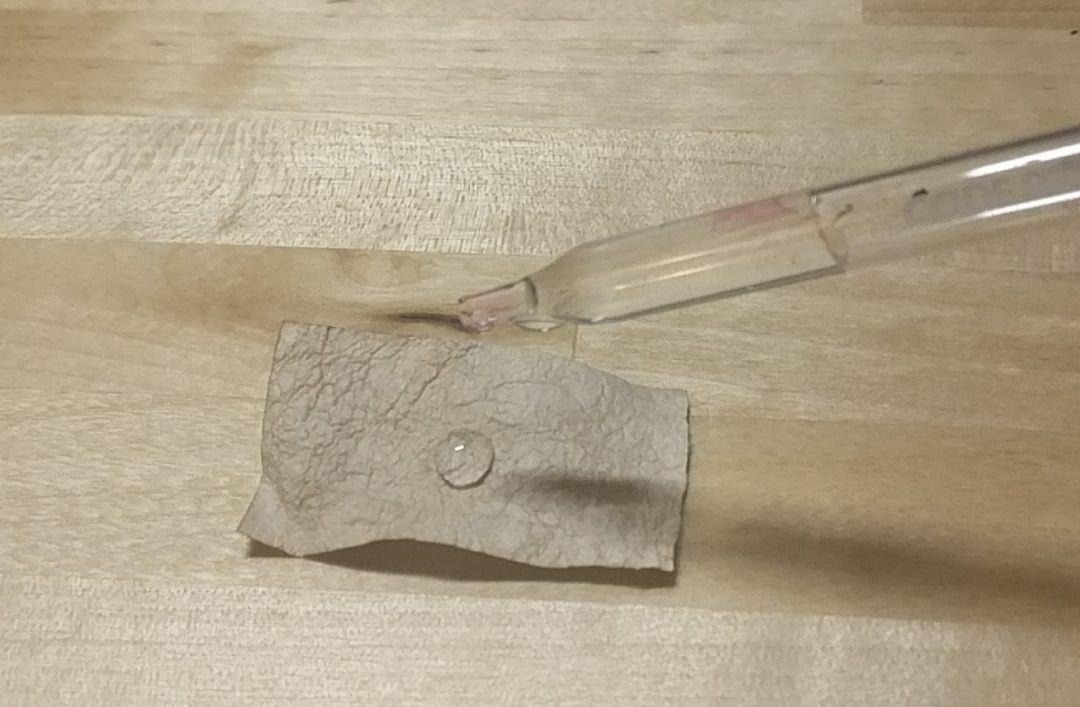one of the benefits of using kyoseishi over regular paper is its added strength in a variety of areas, in particular in terms of water resistance. i've always wondered exactly how much better at water resistance kyoseishi is, so i did some at home tests to find out.
my tests were pretty simple: cut out a small square, put a single drop of water on it, and time how long it took before the drop disappated.

the data
all paper is kyoseishi, so the designation in "paper" is if there's anything special about it. a 0-coat kyoseishi is just the base paper i normally use. some of the times have +s on them since i wasn't about to sit there with a stopwatch for more than a minute or so and thus the times are approximations.
| paper | coats | time | notes |
|---|---|---|---|
| standard | 0 | 0s | |
| standard | 2 | 10s | |
| marbled | 4 | 10m+ | started to "leak" but didn't fully absorb |
| 4x kakishibu coats | 4 | 45m+ | |
| standard | 6 | 10m+ | started to "leak" but didn't fully absorb |
| 4x kakishibu coats | 0 | 45m+ | |
| primo paper | 2 | 10s | spreads less far than a drop on the standard paper does |
the interpretation
so should be pretty obvious that kakishibu is the real winner here! even without any coats of konnyaku, the kakishibu-dyed paper resisted water for more than 45 minutes! the kakishibu, however, didn't seem to give it any additional tear-strength, unlike the konnyaku. so in terms of making a raincoat out of paper, it looks like konnyaku + kakishibu is the way to go.
even without kakishibu, though, 4 or more coats seems to be the minimum necessary for real water resistance for a piece of kyoseishi. i included the note about one of the sheets being marbled, since i don't know if that impacts anything. at the time of the test, i didn't have another 4x coated sheet to compare against. perhaps one day.
addendum
i had been looking to get my kyoseishi formally tested (what's more fun than a formal certificate!) and a paper company near me, Anchor Papers, recommended i try the folks at NPA Testing. i sent one sheet of untreated washi and one sheet of 4x coats of washi and am very appreciative of the time they took on this silly question of mine.
the people at NPA Testing were really kind and gave it their best shot, however, due to the nature of the paper, none of the standard industrial tests worked out. two tests were tried, the Cobb test and a drip test. the Cobb test failed due to the paper not being smooth enough to keep the testing aparatus from leaking water. the drip test failed because of the huge discrepancy (as seen above) between the two sheets. it's much larger than the smaller differences usually seen in industrially coated paper.
🤷♀️ guess that's that!
last updated: 2025-09-03 20:45:00